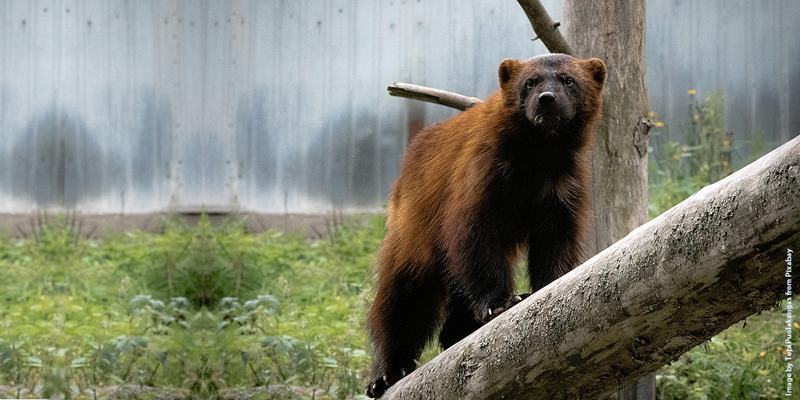Earlier this year, Forestry Commission Scotland unveiled the first complete spatial dataset charting the distribution and extent of Scotland’s native woodlands. This article begins with a brief background to the project, which was recently shortlisted in the ‘Innovation’ category of RSPB’s forthcoming 2014 Nature of Scotland Awards [www.rspb.org.uk/thingstodo/natureofscotland] and goes on to consider what was involved in creating the dataset. The final part outlines various ways in which users can interact with the maps, how they have been applied in practice, and what further development is planned
First of its kind
The Native Woodland Survey of Scotland (NWSS) has provided the first authoritative and consistent digital map of all of Scotland’s native woodlands, offering the most detailed and robust dataset ever compiled to aid conservation of this important resource. Released in full in February 2014, the ambitious GIS-based survey—thought to be the first of its kind in the UK and beyond—set out to map and identify all native woodlands (> 50% native species) of at least 0.5 ha, in addition to nearly-native woodlands (40 to 50 % native species) and plantation on ancient woodland sites (PAWS). Following seven years of intensive fieldwork, the results of the survey are freely available to download in the form of reports, digital maps and data tables (see www.forestry.gov.uk/nwss for more information).
Native tree species are those that arrived naturally in Scotland after the last Ice Age, which ended about 11,000 years ago. Our commonest native trees include Scots pine (recently declared Scotland’s national tree), birch, alder, oak, rowan, ash and willow. Native woodlands once formed the dominant natural ecosystems in post-glacial Scotland, but have suffered gradual fragmentation and loss over the centuries, partly through climatic changes, but mainly as a result of human action or neglect. Today, Scotland’s native woodlands are home to an impressive variety of wildlife, hosting a high proportion of our rare and threatened species such as red squirrel, twinflower, pine marten, wildcat, Scottish crossbill and capercaillie, as well as internationally significant assemblages of invertebrates, plants, fungi, mosses and lichens.
In spite of their value to wildlife, until now there has never been a complete survey of native woodlands in Scotland. Faced with the threat of further fragmentation and loss, much has been done over the last 25 years or more to protect, restore and expand our remaining native woods. Without a reliable national inventory, however, these efforts have been limited by a lack of robust and consistent data on which to target conservation and inform decision-making. Thus the NWSS was conceived in 2004 to meet the need for a sound, detailed and accurate understanding of the location, condition, extent and composition of Scotland’s existing native woodland resource.
All-weather fieldwork
The NWSS survey methodology was developed and piloted between 2004 and 2006, and fieldwork was completed by professional surveyors from 2006 to 2013. Equipped with waterproof GPS-enabled laptops running specialist mapping software customised by FCS, surveyors (up to 34 working at any one time) covered the whole of Scotland in all seasons and all weather. 848,000 ha of woodlands were visited of which over 40% were surveyed in detail. This considerable data collection effort was underpinned by a rigorous training and quality assurance programme: after an initial three weeks’ instruction, surveyors undertook frequent tests and feedback sessions, and all fieldwork results underwent detailed post-survey data checking.
At its heart, the NWSS is a digital woodland map linked to a spatial database that describes, in detail, attributes such as tree species composition and structure, habitat type (including National Vegetation Classifications), herbivore impact, invasive non-native species, and a range of other features where relevant such as erosion, dumping, or pests and diseases.
Publicly available
The dataset is publicly available and free to use: online maps can be browsed and interrogated via the NWSS website’s Map Viewer, and the GIS data can be downloaded for analysis by more advanced users. NWSS data are intended for use at a wide range of spatial scales, from national policy guidance and grant incentives to local management plans and woodland expansion proposals.
A full Esri shapefile download is available for advanced users via Forestry Commissions ‘Data download’ site [http://www.forestry.gov.uk/datadownload]. This dataset comprises a spatial layer containing over 95,000 polygons along with a number of attribute tables, with a one-to-many relationship to the polygon layer.
The biggest of these tables, with detailed tree species information for each survey polygon, contains over 1.7 million records. Such a considerable volume of data is able to support complex queries and spatial analysis by advanced GIS users.
Online interfaces
There are two online interfaces to the NWSS data. The first is contained within Forestry Commission Scotland’s Map Viewer [http://maps.forestry.gov.uk/imf/imf.jsp?site=fcscotland_ext&], powered by ArcIMS® and Geocortex®. In addition to the usual ‘pan’, ‘zoom’ and ‘identify’ tools, the Map Viewer exposes access to all underlying attributes in the dataset. Thus it is possible to view detailed habitat or species records for each survey location.
The second online access portal [http://www.environment.scotland.gov.uk/get-interactive/data/native-woodland-survey-of-scotland/] is embedded within the ‘Scotland’s Environment’ website [http://www.environment.scotland.gov.uk/], under the ‘Discover data’ section [http://www.environment.scotland.gov.uk/get-interactive/discover-data/]. The NWSS tool, built with the TIBCO Spotfire Web Player, combines maps, tables and filters in order to allow users to interactively explore the dataset. Detailed queries can be constructed with only a few clicks, and users can export maps and tables in a variety of formats.
To date, NWSS GIS data has been applied to a variety of native woodland conservation activities:
• Identifying sites with ash trees during the 2012 rapid survey for ash dieback disease caused by the fungus Chalara fraxinea;
• Prioritising restoration of PAWS on the National Forest Estate, using NWSS species records to assess presence of non-native trees;
• Identifying native pinewoods that might be susceptible to pine tree lappet moth (Dendrolimus pini) damage;
• Targeting action on invasive non-native species in South Lanarkshire, in particular Rhododendron ponticum and Japanese knotweed.
Future opportunities are set to include:
• Querying NWSS data on veteran tree distribution and density to assist deployment of volunteers in the Woodland Trust’s Ancient Tree Inventory;
• Identifying ‘hotspots’ of mature and veteran oak, ash and hazel for a forthcoming guide to Atlantic Oakwoods;
• Generating a new set of native woodland integrated habitat networks to promote landscape-scale habitat mosaics and integrated land management.
Potential uses for the ground-breaking NWSS dataset are as numerous as they are diverse, and FCS has appointed a full-time Data Officer to promote the data and advise on its use to relevant organisations and individuals. The release of this spatial dataset has placed renewed focus on Scotland’s native woodlands, and it is hoped that the conservation and management of these special and iconic places will be enhanced by the availability of robust, reliable and freely-available data.
John Tullis is Native Woodlands Survey Data Officer at Forestry Commission Scotland (www.forestry.gov.uk). John has a background in GIS, and has worked on the Native Woodland Survey of Scotland since August 2013. Prior to that he was a spatial analyst for Experian UK
Images above (click to pause)
1. Scots pine, birch and rowan by Loch Rannoch
2 & 3. Working in all seasons and all weather, and equipped with waterproof, GPS-enabled laptops running customised mapping software, surveyors covered the whole of Scotland over a seven-year period
4. The Forestry Commission Scotland Map Viewer. Mapping ©Crown Copyright. Scottish Government Licence Number 100020540 (2014). Ordnance Survey licence number 100026380. All Rights Reserved
5. The NWSS Spotfire tool. Mapping ©Crown Copyright. Scottish Government Licence Number 100020540 (2014). Ordnance Survey licence number 100026380. All Rights Reserved
Subscribe to our newsletter
Stay updated on the latest technology, innovation product arrivals and exciting offers to your inbox.
Newsletter

